Trying to not fail my astro 1010 exam
Angeheftet an
84
3
0
|
|
Erstellt von Cassie Davis
vor etwa 9 Jahre
|
|
Schließen
|
|
Erstellt von Cassie Davis
vor etwa 9 Jahre
|
|

The pictures below show the paths of stars looking in different directions from different places on Earth; arrows indicate the direction of the apparent motions of the stars.
What picture represents the view looking east from a location north of the equator but south of the North Pole.

The figure below shows the Earth's orbital positions on the first days of spring, autumn, summer, and winter. North is up and the Earth orbits counterclockwise. Arrows from the Sun point to either the Northern or Southern Himispheres on Earth.
What position corresponds to the spring equinox.
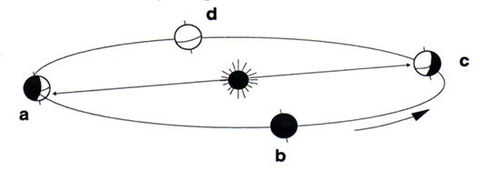
Below is a view of Earth at a solstice or equinox. People (sizes exaggerated) are numbered 1 to 7; special latitudes are lettered a through e. Sunlight is shown as dashed lines with arrows from lower right to upper left on the right. Three cities are indicated with dots.
What time of year is this for the Northern Hemisphere:
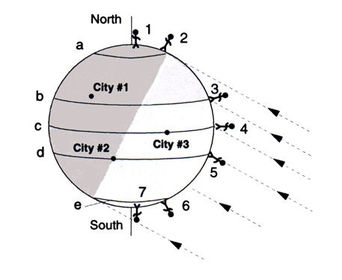
You are standing in the Northern Hemisphere at the position marked X in the figure below. The Sun is at position 6.
What time of year does this figure represent:
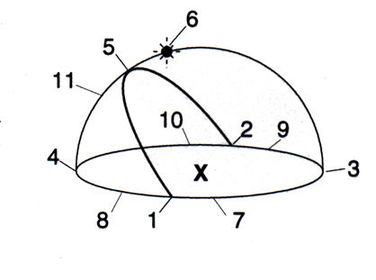
Arrows in the figure below represent sunlight and the dotted circle is the orbit of the Moon.
At what time will the Moon be overhead for person #4:
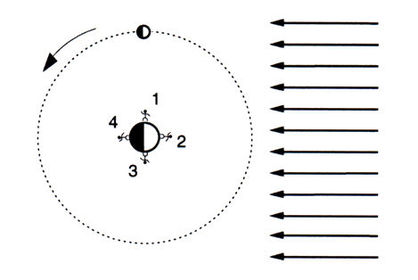
In the lunar phase diagram below where dark represents shadow, which is a waxing gibbous moon:

The Sun is shining from the left in all three geometeries shown below.
Which box represents a lunar eclipse:
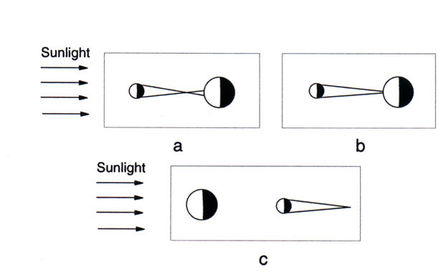
The diagram below shows the Sun (S) adn the Moon (M) in the sky. Arrows at the top show a possible direction of each in the sky due to Earth's rotation. Arrows at the bottom show their possible real motion if different.
Which diagram shows the Sun and the Moon and their correct real and apparent motions:

Where is the Caloris Basin located?
Which of the Jovian planets is the largest?
Which of the Jovian planets is most distant from the sun?
Which planet exhibits a runaway greenhouse effect?
Which planet has an extremely hot atmosphere?
Which group has few moons:
Terrestrial or Jovian planets?
What are the phases of the moon?
What is a solar eclipse? What phase of the moon does it occur at?
What is a lunar eclipse? What phase of the moon does it occur at?
Define eclipse season
Where can inferior and superior planets be observed in the sky?
List the order of the planets and give the relative location of all objects in the solar system
Hypothesis
Prediction of a hypothesis
Verification of a hypothesis
Observations of nature
Describe the motion of the moon’s shadow during a solar eclipse (Describe the relative motion of the moon and sun in the sky)
Where is the Sun at noon on the Summer solstice (the line 2-8-5 represents the celestial equator):
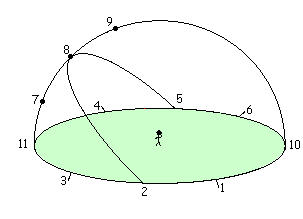
Where does the Sun set at the winter solstice (the line 2-8-5 represents the celestial equator):
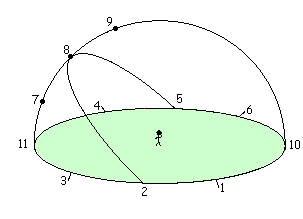
How much earlier do stars rise/set each day?

 Verberge bekannte Karten
Verberge bekannte Karten